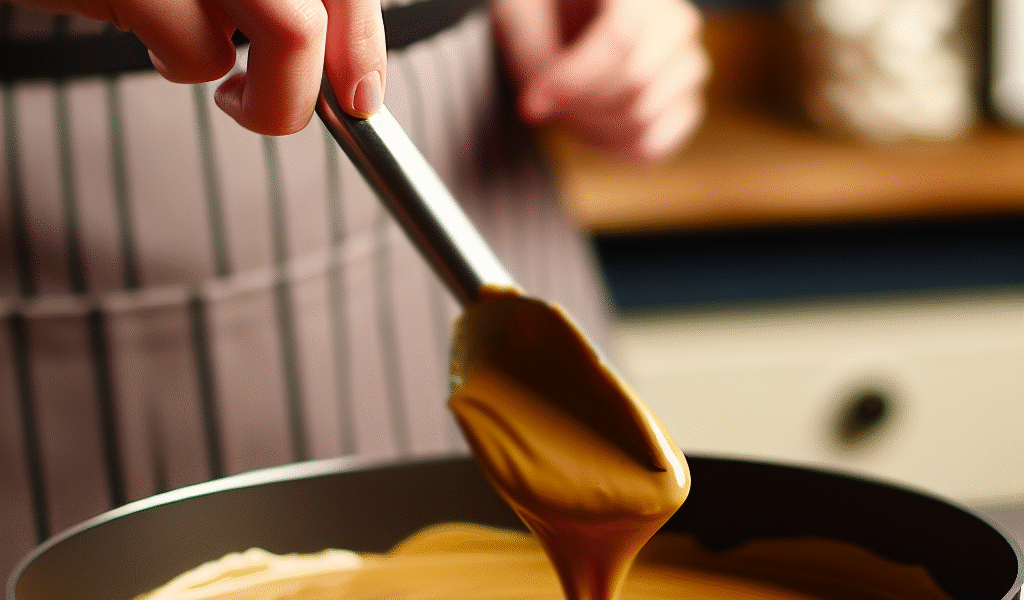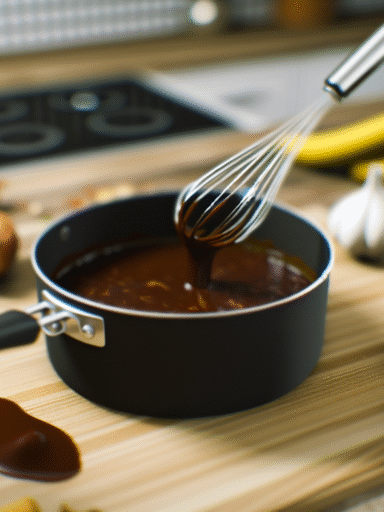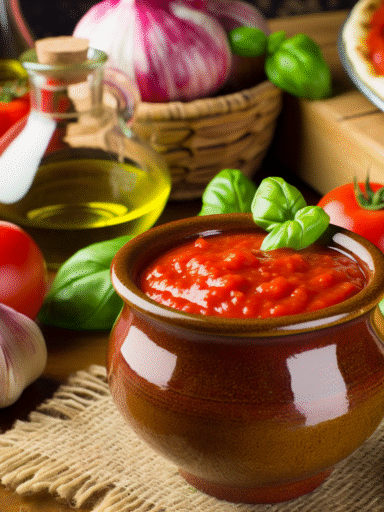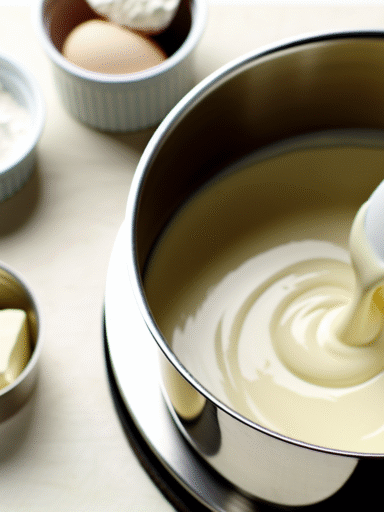The Magic of Roux: Your Kitchen’s Best-Kept Secret Sauce Base
Tags / Categories: Flavor profile: nutty, rich, savory | Main ingredients: butter, flour | Region: French cuisine, global usage | Usage: thickening soups, sauces, gravies, stews
Quick Info Box
- Prep Time: 5 minutes
- Cook Time: 10 minutes
- Total Time: 15 minutes
- Difficulty Level: Easy to Moderate
- Yield: Approximately 1 cup of roux (enough for 2-3 cups of sauce)
Ingredients List
- 4 tablespoons unsalted butter (or substitute with oil for dairy-free options)
- 4 tablespoons all-purpose flour
- Optional: pinch of salt or freshly ground black pepper
What Is a Roux?
Roux is one of those kitchen essentials that might sound fancy, but it’s really just a simple mixture of fat and flour cooked together to create a thickening base. Think of it as the backbone for so many velvety sauces, luscious gravies, and comforting stews around the world. Whether you’re making a creamy béchamel or a rich gumbo, learning how to master a roux will seriously up your cooking game.
In essence, it’s equal parts fat and flour cooked just enough to develop flavor without burning. The longer you cook it, the deeper the flavor and the darker the color, each stage lending itself beautifully to different dishes. Your kitchen will smell amazing right about now.
How to Make the Perfect Roux: Step by Step
- Melt your fat: Start by melting the butter gently over medium heat. If you’re using oil instead (vegetable, canola, or even bacon fat), warm it until shimmering but not smoking.
- Add the flour: Sprinkle the flour evenly over the melted butter and stir briskly with a wooden spoon or whisk to combine. You want a smooth paste—don’t stress if it’s a little chunky at first; just keep stirring.
- Cook it to your desired color: Now the magic happens. Continue stirring constantly. For a white roux, cook for about 2-3 minutes until bubbly and frothy—good for béchamel or light sauces. For a blond roux, cook 5-7 minutes until it takes on a slightly golden color and smells nutty—perfect for velouté. If you have patience, a brown roux can take up to 10-15 minutes to develop a rich, toasty aroma—classic in Cajun dishes like gumbo.
- Remove from heat and use immediately or store: Once cooked to your liking, take it off the heat. Roux cools and thickens quickly, so you can either incorporate it right away or store it (see storage tips below).
Serving Suggestions: What to Use Roux For
Since roux is essentially a thickening agent packed with flavor, it plays the hero in a variety of dishes. Here are some of my favorite go-tos:
- Classic sauces: Use it to create béchamel or velouté, foundational “mother sauces” for countless dishes.
- Soups and stews: Thickens creamy chowders or hearty beef stews, adding a luxurious mouthfeel.
- Gumbo and jambalaya: Brown roux gives these Southern classics their signature smoky depth.
- Gravies: Whisk a roux into pan drippings after roasting meat for a luscious gravy.
Origin & History: From French Kitchens to Every Home Table
The word “roux” comes from the French word for “brown” — and the method dates back centuries in French cuisine, where it served as the base for many velvety sauces. Legendary chefs like Auguste Escoffier popularized roux in the early 20th century, cementing it as a fundamental technique taught in kitchens worldwide.
Over time, this humble roux traveled beyond France, especially to Louisiana and the American South, where it evolved into darker versions integral to Cajun and Creole cooking. It’s fascinating to think this simple mix of flour and fat carries such a rich culinary heritage!
Variations & Substitutions: Tweaking Roux to Your Taste or Needs
- Fat alternatives: Butter is classic, but you can swap in olive oil for a lighter flavor or bacon fat for smoky notes. Coconut oil works if you want to take it dairy-free.
- Flour swaps: For gluten-free diets, try brown rice flour or chickpea flour, though the texture and flavor will vary.
- Color & flavor variations: The cooking time controls your roux’s character. A lighter roux is delicate and mild, while darker roux introduces complexity and nuttiness—just be careful not to burn it!
Storage & Make-Ahead Tips
Roux is surprisingly easy to save for later. Let it cool completely, then transfer to an airtight container.
- Refrigerate: Keep in the fridge for up to 2 weeks. To reuse, gently warm it with a little liquid, stirring to reincorporate.
- Freeze: Roux freezes beautifully. Pop it in a freezer-safe bag or container for up to 3 months. Thaw overnight in the fridge before reheating.
- Tip: When reheating, always stir well to smooth out any lumps that might form.
Nutritional Information (per 1-tablespoon serving)
- Calories: ~80 kcal
- Fat: 7 g
- Carbohydrates: 4 g
- Protein: 0.2 g
Related Sauces / Try Next
- Béchamel Sauce — A creamy classic made from roux and milk.
- Velouté Sauce — A delicate sauce using roux and light stock.
- Gumbo Sauce — Bold, spicy, and dark roux-based sauce.
FAQ
Q: Can I make roux ahead and store it?
A: Absolutely! Roux cools well and stores in the fridge or freezer. Just warm it gently before adding to sauces or soups.
Q: What if my roux gets lumpy?
A: No worries — keep whisking while gradually adding hot liquid, and those lumps will usually smooth out. If needed, strain the sauce before serving.
Q: Can I use a roux for gluten-free cooking?
A: Yes, but you’ll need to substitute the flour with gluten-free options like rice flour or chickpea flour. Results might vary slightly in texture and flavor.
Wrapping It Up
So there you have it, the lowdown on roux—your trusty kitchen sidekick for elevating sauces, soups, and stews from good to unforgettable. Once you get the hang of the technique and the magic of those nutty, golden bubbles, you’ll be reaching for roux again and again. Don’t be shy about making it part of your everyday cooking rhythm. Your taste buds (and guests) will thank you!



